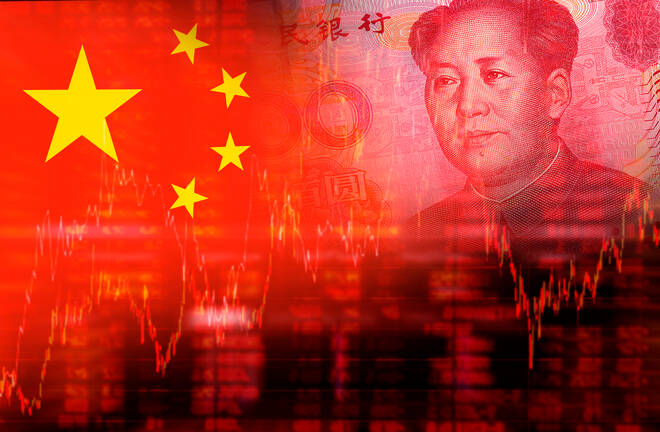Advertisement
Advertisement
China Protests Send Riskier Assets Tumbling amid Economic Uncertainty
By:
Social unrest over COVID-19 lockdown measures in China sends riskier assets into negative territory, as fears build over renewed global supply disruption.
China COVID-19 news updates have grabbed the headlines in recent weeks. Government responses to the surge in new cases had varied from easing containment measures to reintroducing stringent lockdown measures.
Earlier this month, news hit the wires of factory workers escaping as factories introduced on-sight lockdown measures, allowing production facilities. Workers were less enamored by the willingness of the government to permit production to continue under strict controls, opting instead to flee.
However, over the weekend, factory worker resistance escalated to countrywide protests.
What Happened in China Over the Weekend?
On Sunday, Reuters reported demonstrators clashing with police in Shanghai. According to the report, police arrested a ‘busload of protesters.’
There have also been reports of gatherings across universities, and protests in other cities, including Wuhan and Lanzhou. Protesters are challenging Xi Jinping’s zero-COVID policy.
A fire in an apartment block in the region of Xinjiang was the likely catalyst for the uprisings. Reportedly, ten people died in the fire, leading to protests in the provincial capital Urumqi before spreading.
Protesters are calling for Xi Jinping to step down in unprecedented scenes.
The FIFA World Cup has also caused unrest. Scenes of maskless supporters in stadiums forced the government to reportedly censor crowd scenes from the world cup to ease tensions.
The latest surge in new COVID-19 cases and protests across the country have raised uncertainty. How the government responds to the protests will likely be pivotal. Measures to end protests and introduce more stringent lockdown measures could lead to more widespread protests.
However, the government could ease lockdown measures that should ease market tensions.
With the war in Ukraine showing no signs of ending, the introduction of strict lockdown measures in China would not bode well for the global economy. Supply chain disruptions had eased midway through the final quarter.
For central banks, extended lockdown measures could remove hopes of easing inflationary pressure and force more hawkish policy moves. Such an eventuality could drive greater risk aversion, with economies teetering on the brink of recession.
How Protests Could Affect the Global Financial Markets?
Bearish sentiment swept across the financial markets through the Asia session. This morning, the Hang Seng Index and the CSI 300 were down 1.98% and 1.58%, respectively.
The futures markets point to bearish European and US sessions. This morning, the NASDAQ mini and the DAX 30 were down 94.5 and 84 points, respectively.
Crude pile prices showed greater sensitivity to the news of unrest, with WTI and Brent down 2.91% and 2.82%, respectively.
The market risk aversion drove demand for the dollar, with the Dollar Spot Index (DXY) up 0.38% to 106.362.
Things were no better for the crypto market. The crypto market slid by $18.1 billion in the final hour of the Sunday session and by a further $14.2 billion (-1.80%) this morning.
Movement over the remainder of the day will hinge on the Chinese government’s response measures. News of plans to ease lockdown measures to placate protesters would be positive for riskier assets.
About the Author
Bob Masonauthor
With over 28 years of experience in the financial industry, Bob has worked with various global rating agencies and multinational banks. Currently he is covering currencies, commodities, alternative asset classes and global equities, focusing mostly on European and Asian markets.
Advertisement
